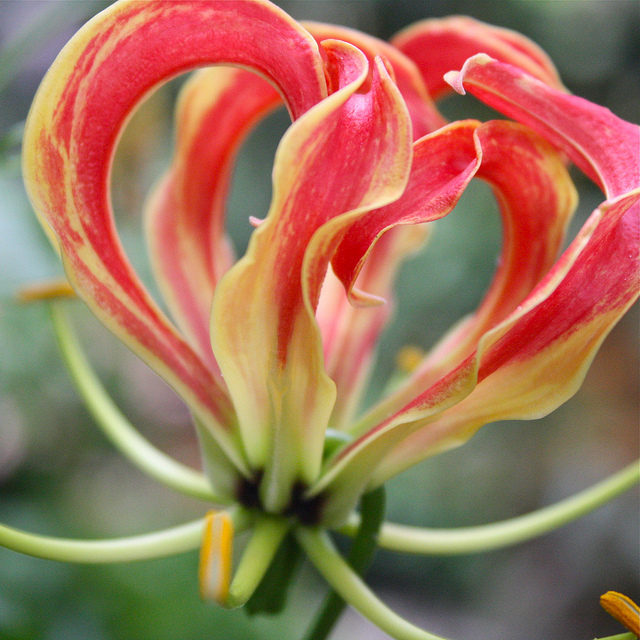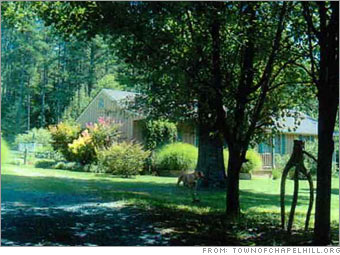Now that most of the deciduous trees have lost their leaves, it’s a great time to transplant trees, or to plant new ones. The reason it’s a good time of year for tree planting is that trees planted this time of year will have as long as possible to settle into their new home before experiencing that time of year that is most stressful to them—the heat of summer. That’s why South Carolina’s Arbor Day is the first Friday of December.
I wrote on how to plant a tree for the December 2012 Jungle Taming newsletter (which you can find here), so I won’t go into techniques in this issue, but I do want to address another tree related subject: tree choice—how do you decide which tree species is best for your particular landscape situation? A good starting point is the “Urban Trees Species Guide” developed by the SC Forestry Commission and Clemson. An online version is available here.
While pest invasions subsequent to the guide’s production have made it wanting for an update in my opinion, it’s still a great place to start in choosing a tree for your SC landscape, whether you’re looking for a small, medium or large tree.
Perhaps the best resource to take with you to the nursery when you’re shopping for trees (and other plants) is the Southern Living Garden Book. It will have information on more of the plants you’re likely to see in our local nurseries than any other resource I know. Near the front of the book is a good plant choice resource—over 100 pages of lists of plants for specific situations.
There is also much information available online to aid in tree selection. Clemson has tree factsheets here—especially useful are the “how to” ones at the top and near the bottom of the list. NC State University has factsheets on large a selection of tree species here. The University of Florida has an abundance of tree information here.
There are several places that you can find lists of recommended trees. I’d like to take the opposite approach and develop a list of trees I’d recommend you avoid.
Trees to Avoid
Bradford pear: These have a lot going for them—they’re pretty in bloom and in fall and are tough enough to handle most conditions. That’s why they’ve been so popular in the last few decades, but they’ve been overplanted to the point of becoming cliché. They also have a nasty habit of self-destructing. Because of the very tight angle of the branches, as the trees age the branches and trunk push against each other, and the tree is very prone to splitting in heavy winds or ice storms. Bradford pear is not tree you plant for your grandchildren.
Leyland cypress: This is a tree not found in nature, a hybrid of two parents belonging to different genera. Its popularity is also the reason it’s on this list. Because it is so common, it has come under heavy disease and insect pressure (pests never have far to travel to find their next Leyland host). It is especially susceptible to two fungal canker diseases that leave big chunks of the foliage dead (and eventually kill the tree), and to bagworm caterpillars.
Sassafras and Red bay: These are both nice, native trees, and if it weren’t for a recent insect infestation, they’d be great small to medium-sized trees for our area. A tiny beetle (about the size of Lincoln’s nose on a penny) from Asia, the red bay ambrosia beetle, carries a disease called laurel wilt that is lethal to both species (and several shrubs). The beetle has devastated redbays and sassafrass on the coast, and its range is expanding. Besides decimating redbay and sassafras, the red bay ambrosia beetle is a major threat to Florida’s avocado industry.
Ash and Hemlock: Similarly, these two species are suffering greatly from exotic insects whose ranges are expanding—ash from the emerald green ash borer, and hemlocks from the hemlock wooly adelgid. You can find more on these here.
(Female) Gingko: Gingkoes are nice trees, especially in the fall, when they give us perhaps the best fall foliage show around. It’s ok to purchase one from a reputable nursery, but don’t buy from a shady source (no pun intended), and don’t even accept a seedling given as a gift. The problem is you might end up with a female. Asexually propagated males make nice trees; female gingkoes make the world’s most stinky fruit. In fall, the fruit falls from the female trees, making a slippery mess and an awful smell.
 Mimosa, Tree of heaven, Chinaberry, Asian Ligustrums, Chinese tallow (AKA popcorn tree), and Paulownia (AKA princess tree) also deserve to be on this list. The problem with these is that they have all escaped into the wild. All of them are very fecund, and their seeds are spread far and wide by wildlife. When planted by a bird outside of our home (and commercial) landscapes, these trees often outcompete our native vegetation, resulting in less food for our native wildlife. Tree of heaven competes in a rather insidious way; its roots secrete a chemical that kills the roots of other plants. The ecologically responsible gardener would not plant any of these trees and would remove any already growing on his property. More on these (and other) exotic invasives can be found in this Forest Service publication.
Mimosa, Tree of heaven, Chinaberry, Asian Ligustrums, Chinese tallow (AKA popcorn tree), and Paulownia (AKA princess tree) also deserve to be on this list. The problem with these is that they have all escaped into the wild. All of them are very fecund, and their seeds are spread far and wide by wildlife. When planted by a bird outside of our home (and commercial) landscapes, these trees often outcompete our native vegetation, resulting in less food for our native wildlife. Tree of heaven competes in a rather insidious way; its roots secrete a chemical that kills the roots of other plants. The ecologically responsible gardener would not plant any of these trees and would remove any already growing on his property. More on these (and other) exotic invasives can be found in this Forest Service publication.
One more tree related item—if you’ve got a tree you’d like to see recognized as a “Treasured Tree,” nominations are due November 15 (in years past, late nominations have been accepted). Treasured Trees is a project of the City’s Tree and Appearance Commission and the Columbia Garden Club to recognize special trees. That “specialness” is in the eye of the beholder—when the award was first conceived a few years ago, we wanted the award to go, not just to trees of state champion size, but also to trees special for other reasons. Reasons like they towered over a couple’s wedding, or were planted to commemorate a child’s birth, or to you they demarcate “home” after a long trip out of town. Information on how to nominate a tree can be found here.
Plant a tree this fall. It’ll do you good (see here and here).
Don McInnes has degrees in biology from Duke, Northwestern and Florida State. He has worked for Clemson Extension in Richland County for more than a decade, assisting thousands of consumers with landscape, garden, wildlife and pest control questions. He is also the owner of Southeastern Environmental Design, a landscape coaching, consulting and design service, and until recently chaired the City of Columbia’s Tree and Appearance Commission. If you’d like help with your landscape, he can be reached at seenvdes@aol.com.





